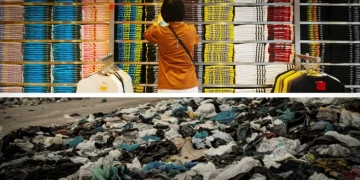By Eva Richardson | The Logistic News
April 9, 2025
As the fast fashion industry faces a convergence of economic and regulatory pressure, one logistics leader is calling for a fundamental rethinking of how the sector operates. Maggie Barnett, CEO of LVK Logistics, has issued a stark warning: the traditional fast fashion model is no longer sustainable in its current form.
Tariffs and De Minimis Elimination Reshape the Landscape
Barnett’s comments come on the heels of sweeping U.S. trade reforms, including the elimination of the de minimis exemption for Chinese imports and newly imposed tariffs ranging from 20% to 46% on key sourcing countries like China, Vietnam, and the European Union. For fast fashion retailers that relied on duty-free imports of low-cost goods, the impact has been immediate and severe.
“We’re witnessing a moment of reckoning,” Barnett said. “Brands that built their margins on low tariffs and high volumes are now being forced to pivot or perish.”
From Speed to Sustainability
To adapt, Barnett advocates for a shift from volume-driven business models to more measured, strategic operations. Her recommendations include:
- Diversifying Supply Chains: Companies must reduce their dependency on China and Southeast Asia by exploring regional manufacturing and nearshoring to markets like Mexico or Central America.
- Shifting to Core, Timeless Products: Instead of chasing every fleeting trend, brands should invest in quality basics that transcend seasonal demand.
- Adopting Pre-Sale and Made-to-Order Models: This approach aligns production with actual demand, reducing waste and excess inventory while enhancing customer engagement.
Branding and Value Over Volume
Beyond logistics, Barnett points to a necessary transformation in how brands connect with consumers. As resale and secondhand platforms continue to rise, younger shoppers are demonstrating a preference for sustainability, durability, and purpose-driven purchasing.
“Consumers want more than fast and cheap—they want authenticity, ethics, and reliability,” Barnett added. “Building community and brand loyalty is now essential for long-term success.”
Retailers Must Rethink Partnerships
Barnett also urges brands to explore broader retail partnerships and multi-channel distribution strategies. Collaborations with big-box retailers or curated marketplace platforms may help companies adapt to new logistics realities while expanding customer reach.
Conclusion: A Turning Point for Fast Fashion
The industry may be fast, but Barnett’s message is clear—it must also become smarter. With tariffs transforming the cost of doing business and consumer preferences evolving rapidly, brands that resist change risk being left behind. Those who embrace smarter logistics, sustainable sourcing, and community-centric branding will define the next chapter of fashion.
For expert insights into evolving supply chain dynamics and apparel logistics, follow Eva Richardson and The Logistic News on Google News and LinkedIn.























